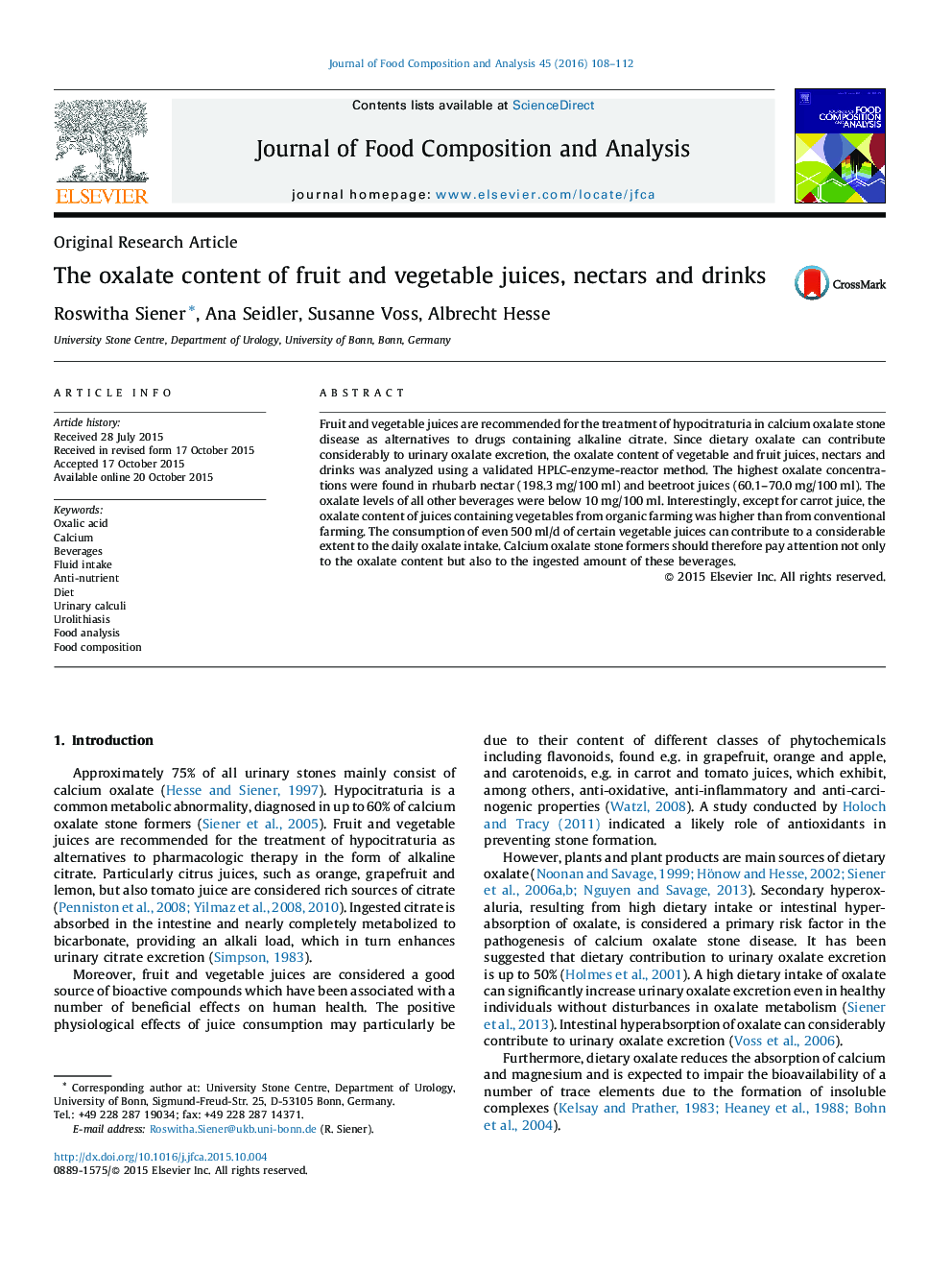| Article ID | Journal | Published Year | Pages | File Type |
|---|---|---|---|---|
| 1218184 | Journal of Food Composition and Analysis | 2016 | 5 Pages |
•Oxalate content of vegetable and fruit juices, nectars and drinks was analyzed.•Highest oxalate concentrations were found in rhubarb nectar and beetroot juices.•Ingestion of certain vegetable juices can contribute considerably to oxalate intake.•Calcium oxalate stone formers should pay attention to the ingested amount of juices.
Fruit and vegetable juices are recommended for the treatment of hypocitraturia in calcium oxalate stone disease as alternatives to drugs containing alkaline citrate. Since dietary oxalate can contribute considerably to urinary oxalate excretion, the oxalate content of vegetable and fruit juices, nectars and drinks was analyzed using a validated HPLC-enzyme-reactor method. The highest oxalate concentrations were found in rhubarb nectar (198.3 mg/100 ml) and beetroot juices (60.1–70.0 mg/100 ml). The oxalate levels of all other beverages were below 10 mg/100 ml. Interestingly, except for carrot juice, the oxalate content of juices containing vegetables from organic farming was higher than from conventional farming. The consumption of even 500 ml/d of certain vegetable juices can contribute to a considerable extent to the daily oxalate intake. Calcium oxalate stone formers should therefore pay attention not only to the oxalate content but also to the ingested amount of these beverages.
